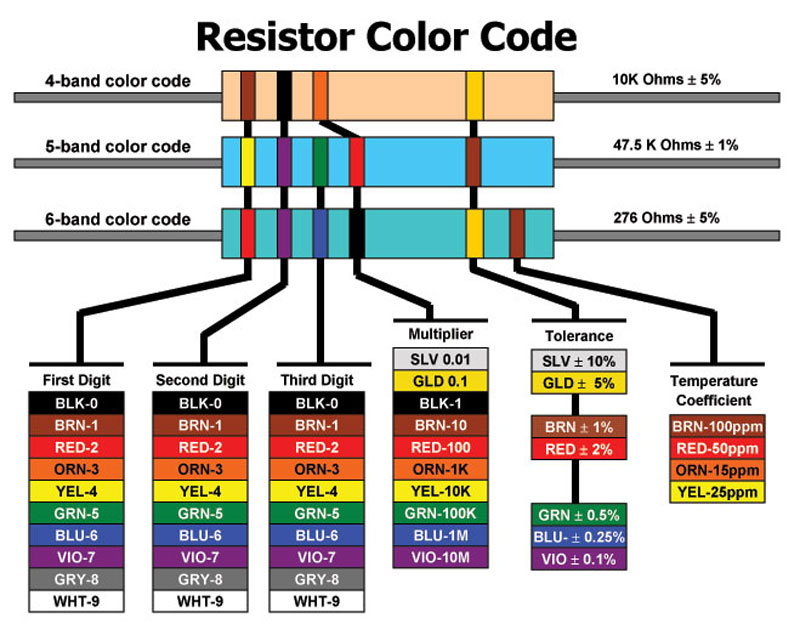
The fourth band (gold) will indicate the tolerance which in our example is: ±5% The result of the multiplication will be: 75 x 10000 = 750000Ω = 750kΩ. We then multiply that number by the multiplier indicated with the 3 rd band (yellow) which has the value of x10 4 = 10000. Since it is a four-band resistor, the first two bands (violet and green) will indicate the significant digits which are, according to the table above 75. Let's take for example a four-band resistor with the following band colors: Violet Green Yellow Gold Then you need to multiply that value by the multiplier to get the resistance value of the resistor. To calculate the resistance value, you need to group the values of the significant digits bands - i.e., the values of the first two or three bands from the left, depending on the total number of bands. This is due to the manufacturing process and it is expressed as a percentage of its preferred value Calculating Tolerance is the percentage of error between the actual measured resistive value and the stated value. In a six-band resistor, the first five bands have the same representation as a five-band resistor followed by one extra sixth band that represents the temperature coefficient of resistance (TCR).

The fourth band represents the multiplier. In a five-band resistor, the first three bands represent the first three significant digits. The fourth band represents the tolerance. The third band represents the multiplier. In a four-band resistor, which is the most common, the first two bands also represent the first two significant digits. Since no tolerance band is available, the tolerance will always be ☒0%. In a three-band resistor, the first two bands represent the first two significant digits followed by one band for the multiplier. It is always better to check the manufacturer’s documentation or use a multimeter to get the exact resistance value. If a gold or silver band is present, then they must be at the right end since they are never used for significant digits. A larger gap between the tolerance band and the other bands is sometimes noticeable. To distinguish the reading direction, the tolerance band width is sometimes printed with 1.5 - 2 times the width of other bands. The reading direction is not always clear. Resistors cases usually have three to six bands that indicate their resistance, tolerance and sometimes their temperature coefficient of resistance (TCR). It describes the coding standard for both resistors and capacitors.

The coding is defined in the international standard IEC 60062:2016. Surface mounted resistors (SMD) use another coding system that uses alphanumeric codes printed on its surface instead of color codes. When the resistor body surface is large enough, as in large wattage resistors, the resistance value, tolerance, and wattage are usually printed on the body of the resistor. Color-coding is also used for capacitors, inductors and diodes. Color bands are used because they can be easily and cheaply printed on a small electronic component. The resistance value will be calculated and shown along with the minimum and maximum values.Ĭolor-coding is a method used to indicate the resistive value, tolerance, and temperature coefficient of resistors with low wattage rating because of their small size.

For each band, select the matching color in the table column indicating the band number.Select the number of bands on the resistor you are trying to identify.To use the calculator, follow these easy steps: This calculator supports resistors with 3, 4, 5, and 6 bands. It will also calculate the minimum and maximum values based on the tolerance ratio. This calculator will help you identify the value, tolerance and temperature coefficient of a color coded resistor by simply selecting the bands colors.


 0 kommentar(er)
0 kommentar(er)
